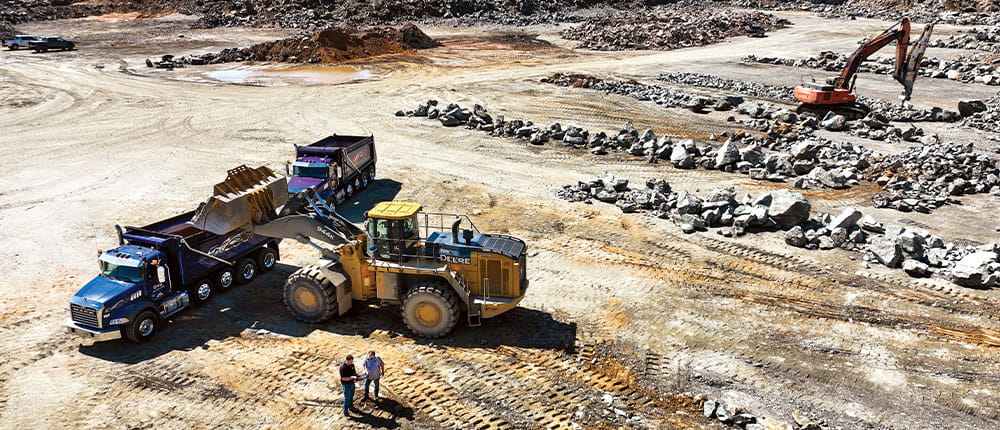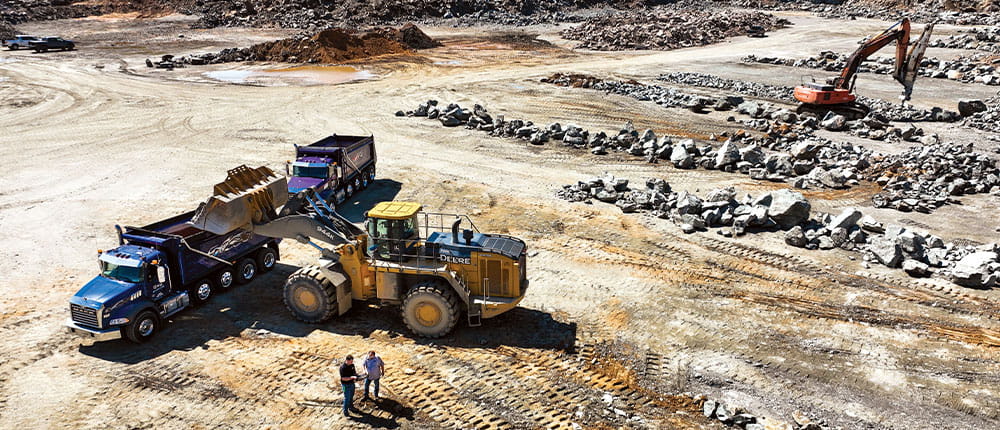As the global effort to reduce carbon dioxide and greenhouse gases gains momentum, tailpipe emissions are a core target. While emission standards narrow in on a zero-emissions future, the automotive industry is sprinting to deliver new solutions through advanced technologies and alternative energy sources. Most of those changes currently take aim at passenger and light-duty vehicles, but a transformation in the trucking industry is soon to follow.
Messy middle
How will new technologies and policies shape the future of the heavy-duty vehicles the ag supply chain relies on? “The truth is, no one knows,” says Gary Tucker, director of environmental health and safety, CHS transportation and logistics, “and the jury will be out for a while.”
Tucker draws from years of fleet management experience to track advances across the transportation industry and gauge sustainable large-scale solutions.
“We’re in a time the industry is calling ‘the messy middle,’” says Tucker. “There are several emerging options when it comes to propulsion, but the technology’s not yet viable for mass adoption by the average fleet operator.”
While electric vehicle (EV) manufacturing, sales and charging infrastructure continue to grow with the help of government credits and incentives, EV batteries remain too heavy and their energy density remains too low to meet the range and weight fleet operators need.
Hydrogen fuel cell technology could offer much-needed range and acceptable vehicle weights, but advancements in technology, price and commercial availability currently remain far out of reach for the average fleet.
“Those technologies could be a fit further down the road,” says Tucker. “Ten years from now, we could see maturing electric battery and hydrogen technologies, but we’re not likely to see a front-runner emerge until closer to 2040 or later. It’s too soon to say where the industry will settle.
“Once that front-runner emerges, it will still take years to turn over the 3 million tractor-trailers currently on the road. It’s safe to say we’re in for a long ride.”
While a trucking transformation won’t happen overnight, a few key trends offer clues to the industry’s evolution.
Carbon reduction policy sets tall order
Just as emissions standards have driven demand for passenger and light-duty EVs and created new markets for alternative fuels, new rules will soon accelerate zero-emissions truck technology.
In late 2022, the U.S. Environmental Protection Agency (EPA) finalized the first rule of its Clean Trucks Plan, which aims to reduce air pollutants emitted by heavy-duty trucks. Under the new rule, heavy-duty truck manufacturers are required to cut nitrogen oxide emissions beginning with model year 2027. The mandate is designed to cut nitrogen oxide emissions from those vehicles by 48% by 2045. The new rule is more than 80% stronger than current standards. Heavy-duty vehicles may also soon be subject to new greenhouse gas emissions standards expected for model year 2027 and beyond.
“It’s a lofty goal the industry is unlikely to meet, but it’s also the looming stake in the ground that’s pushing everyone in the industry to work toward greener technologies, says Tucker.
“We’re just four years away from this rule without a solution that’s ready to be mass produced and meet the new standard. The industry doesn’t have an answer yet.”
Learn how CHS is advocating for owners on carbon reduction policies.
Embracing experimentation
What happens when a standard is set with no long-term solution in sight?
“We’re bound to see a mixed approach of short-term interim solutions while we wait for a long-term zero-emissions winner to emerge from the pack,” says Tucker.
“The next 10 years will be filled with experimentation,” says Ron Batey, CHS refined fuels pricing and economics director. “We’ll see hydrogen fuel cell trucks on the road. We’ll start to see electrified trains and trucks working out the kinks. We’ll see lots of testing taking place across the board to see what works.”
This transition period is reminiscent of an earlier era, when the EPA enacted its 2010 emissions standards.
“These new rules will be much more disruptive to the fleet business than the standards we faced in 2010, but we could see solutions like hybrids, natural gas and propane emerge in the next phase of experimentation,” says Tucker.
Before 2010 emissions standards took effect, some vehicle operators invested in model year 2009 vehicles to pad their fleets with familiar technology, rather than taking a risk with newer technologies designed to cut emissions.
“No one wanted to be the guinea pig and take a risk with the unknown, so they deliberately acquired and maintained those older models for as long as possible to bide their time,” says Tucker. “The supply market is tight today, but I fully expect we’ll see more of the same stock-up strategy as the industry prepares for 2027.”
 Key learnings from general consumer vehicle owners will influence future Class 8 vehicle technology used by fleet operators including Carl Opelt, co-owner of G&S Trucking in Neillsville, Wis., left, shown here with Mack Trucks data consultant Joe Ebben.
Key learnings from general consumer vehicle owners will influence future Class 8 vehicle technology used by fleet operators including Carl Opelt, co-owner of G&S Trucking in Neillsville, Wis., left, shown here with Mack Trucks data consultant Joe Ebben.Competing alternative energy resources
Batey notes that growing demand from consumers for new technology could become an environmental double-edged sword.
From the buildout of a fully connected electric charging network to mining rare earth minerals needed to create EV batteries, more options will be needed to deliver necessary resources and infrastructure for mass-scale solutions.
“Today many of the same materials are needed for assets like EV chargers or batteries or wind turbines or electric motors. Global supply is limited by existing mines and refineries,” says Batey. “Growth in one part of the market could wind up pilfering resources from another. A heavy-duty electric truck is going to require more minerals and much more robust charging resources than the average passenger EV, but if those resources have already been tapped to satisfy general consumer demand, that could slow progress for fleets.”
While serious competition for resources across the automotive space is likely years down the road, Batey notes the dynamic could pose a larger issue as fleet technology evolves.
“Today, we don’t know if passenger vehicles and fleets will ultimately rely on the same technology and resources, but convergence in that technology could create an additional barrier in delivering technology for heavy-duty vehicle operators.”
Invest accordingly
With years of innovation, exploration and uncertainty ahead, experts agree there’s no silver bullet strategy to predict what the future holds for fleet technology or how fleet owners should invest.
“Today, when most fleet operators invest in a diesel truck, they know it can do it all — it has the range and infrastructure they need — and there’s no need to think through how it will be used,” says Tucker. But, he says, as the industry diversifies and emerging solutions come into play, operators will need to think intentionally about how vehicles will be used and invest accordingly.
“Producers will need to ask themselves, ‘How will this truck work for me? What kind of range do I actually need?’ If your truck will be hauling crops from on-farm storage to a nearby terminal, an electric vehicle could someday be an ideal fit. If you’ll be making longer hauls regularly, maybe a hybrid or fuel cell or propane vehicle will be your best fit,” says Tucker.
“There’s no more one-size-fits-all approach. It’s a new way of thinking about your investment, but the better you understand how you’re utilizing your trucks today, the faster you’ll be prepared to act as new solutions emerge.”




